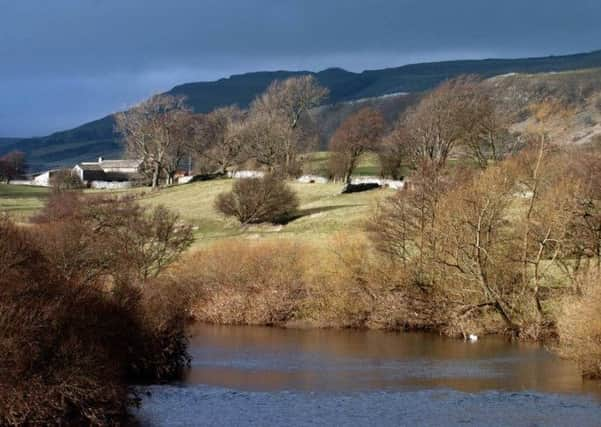Deep concern as health of Dales waterways goes downhill


Drystone walls, the odd sheep and a stream running gently through a patchwork of rolling fields... it’s the iconic image of the Yorkshire Dales.
However, while it may look picture perfect there are concerns that all may not be as it seems. Over the decades erosion and pollution have invaded this corner of the county with both impacting on the waterways of the Dales.
Advertisement
Hide AdAdvertisement
Hide AdIt’s one of the reasons why this Friday a spotlight will be shone on the state of the National Park’s rivers in a special conference which is being held in Skipton. The event will bring together more than 50 experts, including Environment Agency specialists, and a researcher in river ecosystems from the University of Leeds as well as representatives from the Rivers Trust. All have a common aim – to devise a long-term strategy to ensure the future health of miles and miles of waterways.
“We are not saying our rivers are in a critical condition, far from it,” says Andrew Colley, the Yorkshire Dales National Park Authority’s member champion for the natural environment. “However, there are issues which we do need to address.
“Take Hebden Gill, near Grassington. There is a lot of heavy metal which runs into the rivers in that area as a legacy of the old mining industry which once thrived there. At the moment it is not at a level which is dangerous to the fish, but it is something which needs to be closely monitored.
“One of the reasons for organising this conference was to allow us to begin the process of setting new targets to improve river quality, but we also wanted to establish what conservation work is already being done, where the gaps are and where our efforts can be more effectively directed.”
Advertisement
Hide AdAdvertisement
Hide AdOne early indication that the delicate balance of the Dales was being tipped was a decrease in what’s known as “fly rise”, those clouds of insects which hover around the water’s edge.
Their decline can in part be traced back to the national food strategy which was ushered in during the 1970s. As part of a big push to increase food production, marginal areas had to be brought into play. Landowners were given generous grants to introduce drains, turning boggy marshland into perfect grazing land for sheep.
However, the knock-on effect was severe soil erosion, which led to the loss of many natural habitats and completely changed the way the Dales waterways worked.
“In some areas the rainwater comes off the hills so quickly it flushes everything down with it,” says Mr Colley. “It’s not a new problem, but we do need to look closely at how manage the land in the Dales.”
Advertisement
Hide AdAdvertisement
Hide AdThe River Cover neatly illustrates the problem. During dry spells it’s a 14-mile oasis for fly fishermen, brimming with brown trout, grayling and salmon. However, when the heavens open the gentle ebb and flow turns into a raging corridor, with water speeding down into the River Ure and onwards eventually to the Ouse.
Last September, after a day of torrential rain, water levels rose at record speed and came close to breaching the flood defences in York, 50-odd miles away.
However, it’s not a lost cause and groups like the Yorkshire Dales Rivers Trust have already shown what can be achieved. Largely made up of volunteers, the organisation was formed in 2004 in recognition of the fact that the Dales’ tumbling streams were not as pristine as they might look.
While controlling the vagaries of the British climate may be beyond the powers of even this determined group, they have come up with a blueprint which should, given time, reverse some of the damage. As well as a number of extensive tree- planting schemes which are already underway, the group has been looking at rebuilding the most damaged river banks and has from the start sought to bring farmers on board, particularly when it comes to the use of fertilisers.
Advertisement
Hide AdAdvertisement
Hide Ad“A major driver in founding the trust was the lack of effort in engaging local communities, farmers and landowners,” said a spokesman for the trust. “Without these partnerships it had meant conservation and restoration had been piecemeal, inefficient and poorly supported. That’s what we are trying to change and by starting in the uplands and working down the Dales we hope to achieve real change over the next decade.”
• The Spotlight on Rivers conference will take place at Craven College in Skipton on Friday. For more information visit www.natureinthedale.org.uk